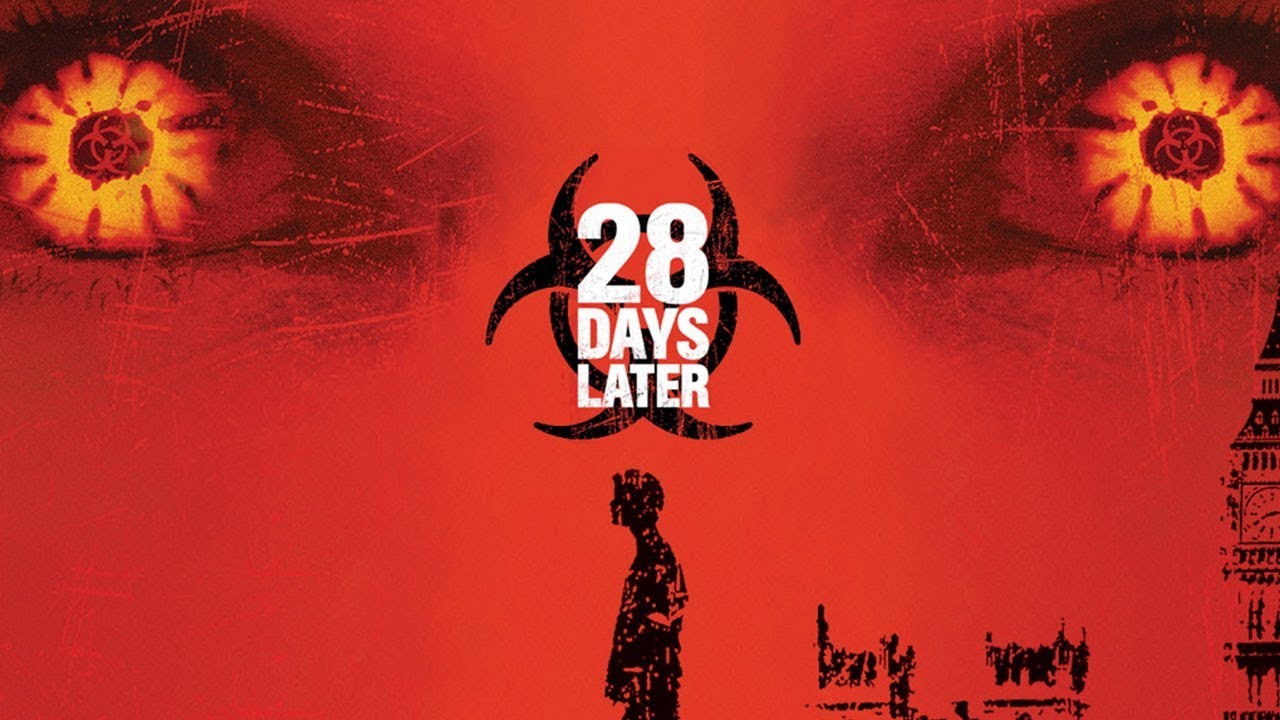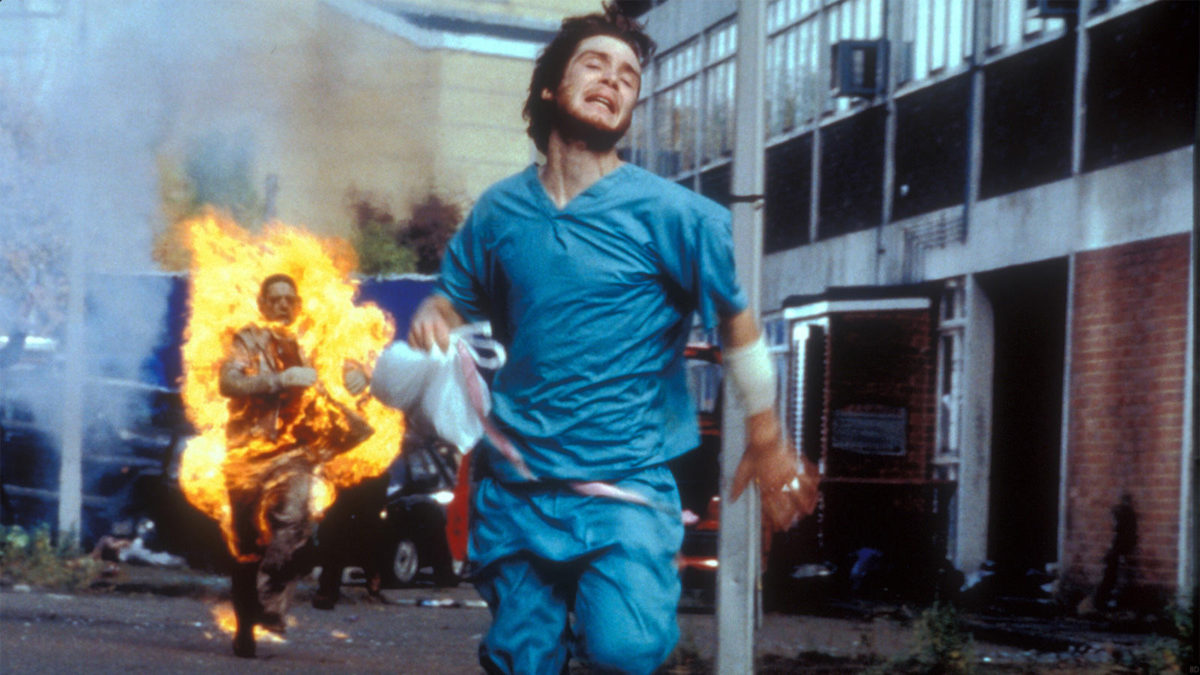28 Days Later (2002)

“28 Days Later” (2002), directed by Danny Boyle and written by Alex Garland, is a landmark in the zombie genre, though its creatures are more accurately described as infected with a rage virus rather than traditional undead zombies. The film is noted for its intense atmosphere, innovative approach, and social commentary.
Plot Summary: The film opens with animal rights activists freeing a chimpanzee from a research facility, unaware that the chimp carries a highly contagious and aggressive virus. This virus rapidly spreads throughout the UK, leading to a near-total societal collapse. The story follows Jim (Cillian Murphy), a bicycle courier who wakes up from a coma 28 days after the outbreak to find London deserted and overrun by rage-fueled infected individuals. As Jim navigates the post-apocalyptic landscape, he encounters other survivors and faces the challenge of not only surviving the infected but also dealing with the darker aspects of human nature in a collapsed society.
Strengths:
- Innovative Approach: “28 Days Later” is often credited with revitalizing the zombie genre by introducing fast-moving infected, which added a new level of urgency and tension to the narrative. The depiction of the infected as frenzied and violent contrasts sharply with the slow, shuffling zombies of earlier films.
- Atmospheric Cinematography: The film makes striking use of digital video, which gives it a gritty, realistic feel. The empty streets of London and the desolate landscapes contribute to a sense of isolation and despair, enhancing the film’s suspense.
- Character Development: The film delves into the psychological and emotional impact of the apocalypse on its characters. The interactions between survivors reveal as much about human nature as the external threats they face.
- Social Commentary: “28 Days Later” explores themes of societal collapse, the fragility of civilization, and human cruelty. The story examines not just the threat of the infected but also the moral and ethical dilemmas faced by the characters as they struggle to survive.
- Effective Soundtrack: The film’s soundtrack, composed by John Murphy, includes the haunting and memorable track “In the House – In a Heartbeat,” which enhances the film’s tension and emotional weight.

Weaknesses:
- Pacing Issues: Some viewers might find the pacing uneven. The transition from the initial outbreak to the quieter, more character-driven second act might feel slow to those expecting constant action.
- Character Motivations: While the film excels in depicting survival and human nature, some characters’ motivations and decisions can seem inconsistent or underdeveloped, particularly in the latter half of the film.
- Limited Scope: The focus on a small group of survivors and their immediate surroundings might leave some viewers wanting more context about the broader impact of the virus on the rest of the world.
Overall, “28 Days Later” is a significant entry in the horror genre, blending intense action with deep psychological and social insights. Its impact is felt not only through its innovative take on zombie lore but also through its compelling, character-driven narrative.










